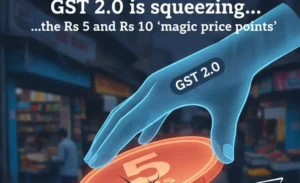India’s desire to arise as a worldwide manufacturing center point lays on its great potential, bountiful assets, and skilful workforce. In order to promote economic growth and development, India is putting itself in a position to embrace advances in technology, draw investments, and boost its industrial sector.
Approaches for Development:
To make doing business easier, cut down on rules and regulations, and foster investment in the manufacturing sector, policy reforms are much needed. At the same time, critical ventures are being coordinated towards framework advancement, including transportation organizations and modern passages, to help modern development. The promotion of Industry 4.0 technologies demonstrates India’s commitment to innovation and efficiency in production process and skill development initiatives aim to provide the workforce with the necessary knowhow to meet the demands of modern manufacturing. Apart from that, believed that encouraging and promotion of MSME is necessary for the development of businesses and the creation of new jobs.
Obstacles and Problems:
An insufficient framework, described by power deficiencies and logistical shortcomings, obstructs the area’s development potential. Regulatory compliance is hindrances to business activities and speculation inflows. Tending to the deficiency of gifted work and crossing over the innovative hole remain squeezing concerns. In addition, India faces fierce competition from established manufacturing centers, necessitating strategic actions to increase competitiveness and attract investment.
Open doors for development:
Be that as it may, during difficulties lie open doors. The approach of arising advances, for example, man-made brainpower and added substance producing, holds the commitment of changing assembling cycles and driving development. Changes in worldwide stockpile chains offer India the chance to arise as a favored destination for businesses, particularly in areas like hardware, auto, and drugs. Domestic manufacturing and foreign investment are sparked by government initiatives like tax breaks and investment incentives. India’s position in the global manufacturing landscape is strengthened by strategic partnerships with international stakeholders that make technology transfer and market access easier.
Conclusion:
In conclusion, there are many facets to India’s journey toward becoming a global manufacturing hub. The manufacturing industry can achieve sustainable growth and competitiveness through innovative tactics, joint efforts, and strategic interventions even if obstacles continue. With a purposeful spotlight on utilizing potential open doors, tending to difficulties, and cultivating a favorable environment for assembling, India stands ready to understand its vision and arise as a force to be reckoned with in the worldwide manufacturing and assembling ground.










